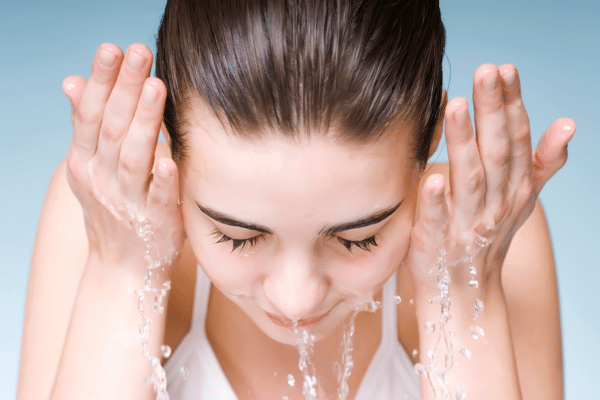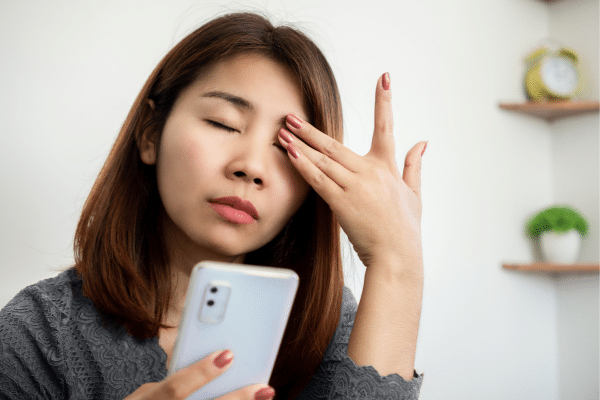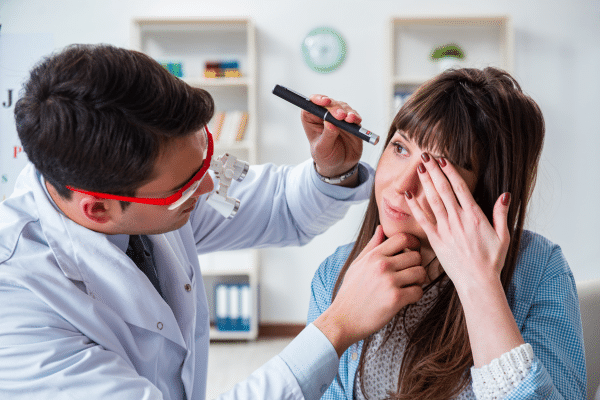Waking up with eye boogers can be an unpleasant start to the day. These small, crusty accumulations, scientifically known as rheum, are a mixture of mucus, oil, skin cells, and dust that gather in the corner of the eyes during sleep. While generally harmless, excessive eye boogers can sometimes indicate underlying health concerns. This blog post explores practical ways to reduce and prevent the formation of eye boogers, focusing on simple lifestyle changes and hygiene practices. Understanding these methods not only enhances eye health but also contributes to overall well-being.
Contents
Stay Hydrated

Proper hydration is vital for overall health, including the well-being of the eyes. The human body requires adequate fluids to produce tears, which naturally cleanse the eyes. Insufficient hydration can lead to dry eyes, increasing the likelihood of eye discharge accumulation overnight. To counter this, it’s recommended to drink plenty of water throughout the day. The standard advice is to consume at least eight glasses of water daily, but individual needs may vary based on factors like climate and physical activity.
In addition to drinking water, incorporating water-rich foods into the diet can further aid in staying hydrated. Fruits like cucumbers, oranges, and watermelons, and vegetables such as lettuce and celery, are excellent sources of hydration. These foods contribute not only to fluid intake but also provide essential nutrients that support eye health. It’s also advisable to limit dehydrating beverages such as caffeine and alcohol, particularly before bedtime, to maintain optimal hydration levels for the eyes.
Maintain Good Eye Hygiene

Good eye hygiene is crucial in preventing the buildup of eye boogers. Dirt, makeup, and other external factors can contribute to their formation. Therefore, cleaning the eyes regularly and thoroughly is essential. Before bed, gently wash the face and eyelids with a mild cleanser to remove any impurities. It’s important to avoid harsh soaps or chemicals near the eyes, as these can irritate and dry them out, exacerbating the problem.
For those who wear makeup, ensuring complete removal before sleep is vital. Residual makeup can clog the glands around the eyes, leading to increased discharge. Using a gentle, oil-free makeup remover can prevent this. Additionally, avoid sharing towels or washcloths to reduce the risk of transferring bacteria or irritants to the eye area. Changing pillowcases regularly also helps in maintaining a clean environment for the eyes during sleep.
Manage Allergies Effectively

Allergies are a common cause of increased eye discharge. Pollen, dust, pet dander, and other allergens can irritate the eyes, leading to redness, itching, and the production of rheum. To minimize these symptoms, it’s important to identify and avoid known allergens. Keeping windows closed during high pollen seasons and using air purifiers can help reduce exposure to airborne allergens. Regular cleaning of living spaces also reduces the accumulation of dust and pet dander.
Over-the-counter antihistamines can be effective in managing allergy symptoms. However, it’s advisable to consult with a healthcare professional before starting any medication. For those who suffer from severe allergies, prescription medications or allergy shots may be necessary. Additionally, using hypoallergenic bedding and avoiding rubbing the eyes can significantly reduce irritation and the formation of eye boogers.
Eat A Healthy Diet

A balanced diet plays a crucial role in maintaining eye health. Nutrients like vitamins A, C, and E, as well as omega-3 fatty acids, are particularly beneficial for the eyes. Vitamin A, found in carrots, sweet potatoes, and leafy greens, is essential for maintaining a healthy cornea. Vitamin C, abundant in citrus fruits and berries, supports the health of blood vessels in the eyes.
Omega-3 fatty acids, which are found in fish like salmon, mackerel, and sardines, help to regulate the eye’s oil film that is produced by the meibomian glands. This oil film is crucial for preventing dry eyes, a condition that can lead to increased eye booger formation. Including a variety of fruits, vegetables, and lean proteins in the diet ensures that the eyes receive the nutrients they need to function optimally.
Get Adequate Sleep

Adequate sleep is essential for eye health. During sleep, the eyes are replenished with essential nutrients and any accumulated debris is cleared away. Adults are generally advised to aim for 7-9 hours of quality sleep per night. Consistent sleep deprivation can lead to increased eye strain and a greater likelihood of waking up with eye boogers.
Creating a conducive sleep environment can improve sleep quality. This includes maintaining a dark, quiet, and cool bedroom. Avoiding electronic devices before bedtime is also beneficial as the blue light emitted can disrupt natural sleep patterns. Establishing a regular sleep routine helps in synchronizing the body’s internal clock, leading to better sleep quality and healthier eyes.
Reduce Screen Time

Excessive screen time can have a detrimental effect on eye health. Prolonged use of computers, smartphones, and tablets can lead to digital eye strain, characterized by dry, irritated eyes. When the eyes are dry, they are more prone to irritation and increased rheum production. It is recommended to follow the 20-20-20 rule: every 20 minutes, take a 20-second break to look at something 20 feet away.
In addition to taking regular breaks, adjusting screen brightness and using devices at a proper distance can help minimize strain. Blue light filters on devices or special eyeglasses can also reduce exposure to harmful blue light. Ensuring proper lighting in the workspace and blinking often helps in keeping the eyes moist and healthy.
Consult With Eye Care Professionals

Regular check-ups with an eye care professional are crucial for maintaining eye health. These visits can help identify any underlying conditions that might be contributing to excessive eye discharge. An eye doctor can provide tailored advice and treatment options based on individual eye health needs.
For those experiencing persistent or unusual eye discharge, seeking professional advice is important. This could be a sign of an eye infection or other serious condition requiring medical attention. An eye care professional can diagnose the issue and recommend appropriate treatments, which might include prescription eye drops or other medications.
The Bottom Line
In conclusion, preventing morning eye boogers involves a combination of good hygiene, lifestyle choices, and healthcare practices. Staying hydrated, maintaining good eye hygiene, managing allergies, eating a healthy diet, getting adequate sleep, reducing screen time, and regular consultations with eye care professionals are all effective strategies. Adopting these habits not only helps in reducing the occurrence of eye boogers but also contributes to overall eye health and well-being. Remember, eyes are windows to the world, and taking care of them should be a priority.


